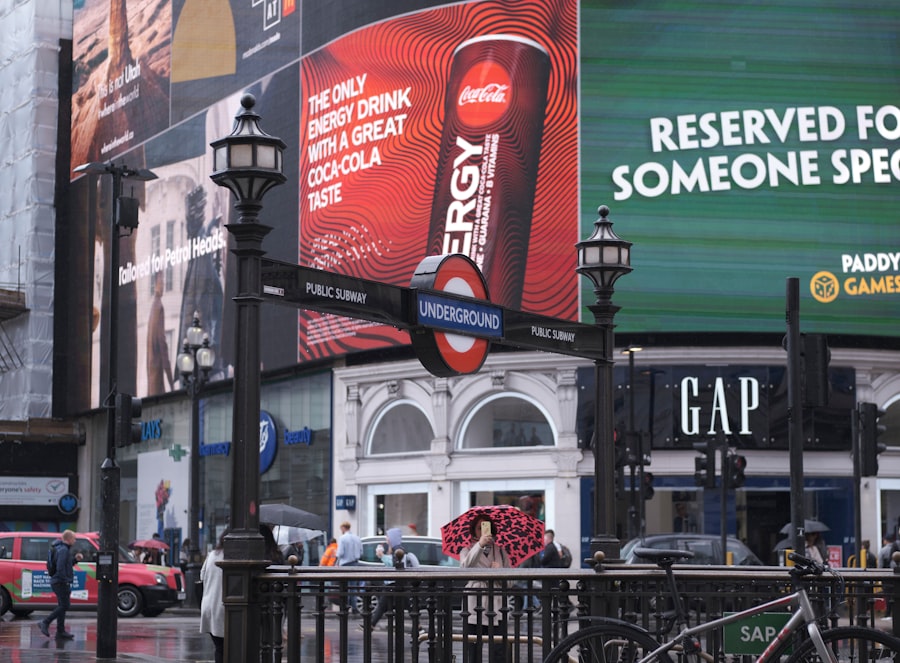In recent years, social media has transformed the landscape of marketing within the football industry. The advent of platforms such as Twitter, Instagram, and TikTok has provided clubs, players, and brands with unprecedented opportunities to engage with fans on a global scale. Football clubs have recognized the potential of these platforms to not only promote their matches and merchandise but also to build a community around their brand.
For instance, clubs like Manchester City and FC Barcelona have amassed millions of followers, allowing them to reach audiences far beyond their local fan base. This shift has led to a more dynamic interaction between clubs and supporters, where fans can engage directly with their favorite teams and players. Moreover, the immediacy of social media allows for real-time engagement during matches and events.
Clubs can share live updates, behind-the-scenes content, and player interactions that enhance the fan experience. For example, during a match, a club might post live reactions from players or share fan-generated content, creating a sense of community and shared experience among supporters. This not only keeps fans engaged but also fosters loyalty as they feel more connected to the club.
The rise of social media marketing in football has thus redefined how clubs communicate with their audiences, making it an essential component of their overall marketing strategy.
Key Takeaways
- Social media has become a crucial platform for football marketing, enhancing fan engagement and brand visibility.
- Player personalities are effectively used to build strong, relatable football brands.
- Innovative sponsorships and partnerships are driving new revenue streams and brand collaborations.
- Interactive campaigns are key to deepening fan involvement and loyalty.
- Data analytics and digital content are transforming targeted marketing and fan experience in football.
Leveraging Player Personalities for Branding
Football players are often seen as larger-than-life figures, and their personalities can significantly influence branding strategies for clubs and sponsors alike. Players like Cristiano Ronaldo and Lionel Messi have transcended the sport, becoming global icons whose endorsements can drive substantial revenue. Clubs have begun to leverage these personalities not just for promotional purposes but as integral parts of their branding efforts.
By aligning with players who embody the values and ethos of the club, organizations can create a more authentic connection with fans. For instance, Neymar Jr.’s flamboyant style and charismatic presence have made him a prime candidate for various marketing campaigns. His association with Paris Saint-Germain (PSG) has not only elevated the club’s profile but also attracted a younger demographic eager to engage with his brand.
Similarly, clubs are increasingly using player stories—such as their journeys from humble beginnings to stardom—to resonate with fans on a personal level. This narrative-driven approach allows clubs to create deeper emotional connections with their supporters, enhancing brand loyalty and engagement.
Innovative Sponsorship and Partnership Strategies

The traditional model of sponsorship in football is evolving as clubs seek innovative ways to maximize revenue streams while enhancing fan experiences. Brands are no longer just looking for logo placements on jerseys; they want meaningful partnerships that resonate with fans. This shift has led to creative collaborations that go beyond mere financial transactions.
For example, clubs are now partnering with tech companies to enhance the matchday experience through augmented reality (AR) applications or interactive fan zones. One notable example is the partnership between Manchester United and the technology company Qualcomm. This collaboration focuses on improving connectivity within Old Trafford, allowing fans to access real-time statistics and exclusive content during matches via their mobile devices.
Such partnerships not only provide financial benefits but also enhance the overall fan experience, making matches more engaging and interactive. As clubs continue to explore innovative sponsorship strategies, the focus will likely remain on creating value for both brands and fans alike.
Engaging Fans through Interactive Campaigns
| Metric | Description | Example Value | Importance |
|---|---|---|---|
| Engagement Rate | Percentage of fans interacting with the campaign content | 45% | High |
| Participation Rate | Percentage of fans actively participating in interactive elements (polls, quizzes, contests) | 30% | High |
| Average Session Duration | Average time fans spend engaging with the campaign | 5 minutes 20 seconds | Medium |
| Social Shares | Number of times campaign content is shared on social media platforms | 1,200 shares | High |
| New Followers | Number of new fans gained during the campaign period | 850 | Medium |
| Click-Through Rate (CTR) | Percentage of fans clicking on campaign links or calls to action | 12% | High |
| User-Generated Content (UGC) | Number of fan-created posts related to the campaign | 300 posts | Medium |
| Conversion Rate | Percentage of fans completing desired actions (sign-ups, purchases) | 8% | High |
Engagement is at the heart of modern football marketing, and interactive campaigns have emerged as a powerful tool for clubs to connect with their supporters. These campaigns often leverage digital platforms to create immersive experiences that encourage fan participation. For instance, clubs may run social media contests where fans can submit their own content—such as matchday photos or videos—using specific hashtags.
This not only generates user-generated content but also fosters a sense of community among fans. Another effective strategy is the use of gamification in marketing campaigns. Clubs like Borussia Dortmund have successfully implemented interactive quizzes and challenges that allow fans to test their knowledge about the team or its history.
These initiatives not only entertain but also educate fans about the club’s legacy, deepening their connection to it. By creating opportunities for fans to engage actively rather than passively consuming content, clubs can cultivate a loyal following that feels invested in the team’s success.
The Impact of Digital Content and Streaming Services
The rise of digital content and streaming services has revolutionized how football is consumed globally. With platforms like DAZN, ESPN+, and even YouTube offering live matches and exclusive content, fans now have unprecedented access to their favorite teams and players. This shift has prompted clubs to rethink their content strategies, focusing on producing high-quality digital content that resonates with fans across various platforms.
Clubs are increasingly investing in original programming that goes beyond match highlights. Documentaries, player interviews, and behind-the-scenes footage provide fans with a deeper understanding of the club’s culture and values. For example, Manchester City’s “All or Nothing” documentary series offered an intimate look at the team’s journey during a season, showcasing not just the matches but also the personal stories of players and staff.
Such content not only attracts new fans but also strengthens existing loyalties by providing insights that deepen emotional connections.
Utilizing Data and Analytics for Targeted Marketing

In an era where data drives decision-making across industries, football marketing is no exception. Clubs are harnessing data analytics to understand fan behavior better and tailor their marketing efforts accordingly. By analyzing social media interactions, ticket sales data, and merchandise purchases, clubs can identify trends and preferences among their supporters.
For instance, data analytics can reveal which demographics are most engaged with specific types of content or merchandise. A club might discover that younger fans are more likely to engage with video content on TikTok while older fans prefer in-depth articles on Facebook. Armed with this information, clubs can create targeted marketing campaigns that resonate with each demographic segment.
Additionally, predictive analytics can help clubs anticipate fan needs—such as when to launch new merchandise or schedule promotional events—ensuring they remain relevant in an ever-changing market.
Creating Memorable Experiential Marketing Events
Experiential marketing has become a cornerstone of football marketing strategies as clubs seek to create memorable experiences for fans beyond the pitch. These events allow supporters to engage with their favorite teams in unique ways, fostering loyalty and enhancing brand affinity. Clubs are increasingly organizing fan festivals, meet-and-greet sessions with players, and interactive training camps that allow fans to immerse themselves in the club’s culture.
One notable example is FC Barcelona’s annual “Barça Experience,” where fans can tour Camp Nou, participate in interactive exhibits about the club’s history, and even meet current players. Such events not only generate revenue through ticket sales but also create lasting memories for attendees, strengthening their emotional connection to the club. As experiential marketing continues to evolve, clubs will likely explore new ways to engage fans through innovative events that reflect their brand identity.
The Evolution of Football Merchandising and E-commerce
The landscape of football merchandising has undergone significant changes in recent years, driven by advancements in e-commerce and shifts in consumer behavior. Fans are no longer limited to purchasing merchandise at physical stores; they can now shop online from anywhere in the world. This shift has prompted clubs to invest heavily in their e-commerce platforms, ensuring they provide seamless shopping experiences for fans.
Clubs like Liverpool FC have embraced this trend by launching user-friendly online stores that offer a wide range of merchandise—from jerseys to exclusive collectibles—catered to global audiences. Additionally, personalized merchandise options have gained popularity; fans can now customize jerseys with their names or choose unique designs that reflect their individual style. This evolution in merchandising not only enhances revenue streams but also allows clubs to connect with fans on a more personal level by offering products that resonate with their identities.
As e-commerce continues to grow within the football industry, clubs will need to stay ahead of trends by leveraging technology such as augmented reality for virtual try-ons or utilizing data analytics to optimize inventory management based on fan preferences. The future of football merchandising lies in creating an engaging online shopping experience that reflects the passion and loyalty of its supporters while driving revenue growth for clubs worldwide.



